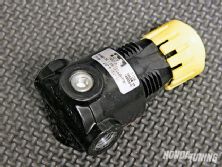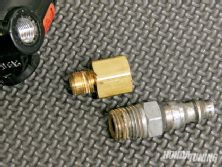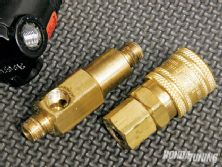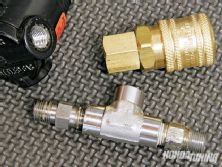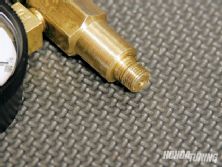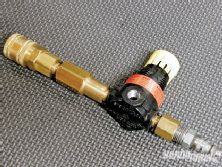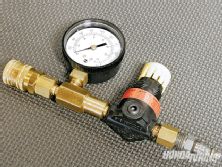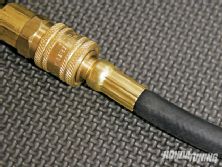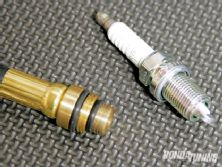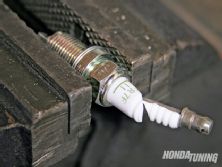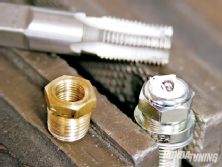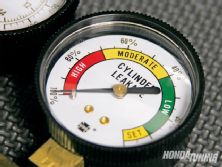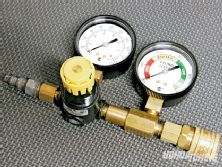Besides all of the moving parts and complicated-looking pieces of metal, an engine really only needs four things to run: fuel, air, compression, and a spark. It sounds easy enough, but once there's a problem with any one of these four things the chances of your engine actually running become pretty slim. The first tool many do-it-yourselfers, and even mechanics, grab when an internal engine problem is suspected is the compression tester. While the compression tester serves its purpose, it'll never be able to pinpoint the actual problem. Sure, it can tell you that cylinder number three has just taken a crap, but it won't tell you why. Is it the piston rings or a valve? How about a cracked cylinder wall or a blown headgasket? It's times like these you'll need a leak-down tester.
Cylinder leak-detection testers work by shoving air into an individual cylinder through the spark plug hole and measuring how much, percentage-wise, leaks out. Where the air actually leaks from can help you diagnose what the problem is. For example, pull the oil cap. Hear a howling sound inside the crankcase? This is a good indication there's a problem with the rings or cylinders - either way, the head's coming off. What about exhaust puffs gently streaming from the tailpipe? You've probably got bent or burnt exhaust valves here. You can also open the throttle body and listen for funny sounds, which can indicate a problem with the intake valves. If all of this checks out but you've still got poor leak-down results, you've probably got a head gasket that needs replacing. If that's the case, air will likely be escaping into the cylinder next to the one you're testing. A strong engine will yield leak-down results of less than 5 percent per cylinder, with readings that vary less than 3 psi from one to the next. Anything over 10 psi should be investigated.
Besides the leak-down tester itself, which ranges anywhere from $75 on up, you'll also need an air compressor capable of at least 100 psi, and the ability to find TDC (top dead center) at the compression stroke. While we can't help you with the whole compressor thing, it's easy to build your own leak-down tester on the cheap. Here's how:
Leak-Down Procedure
1 Bring the engine to operating temperature and turn the ignition off.
2 Bring the number-one cylinder to TDC and remove its spark plug.
3 Connect the leak-down tester to the air compressor and regulate it to 100 psi.
4 Thread the leak-down adapter into the spark plug hole.
5 Connect the leak-down tester's air coupler to the adapter and monitor the results.
6 Replace the spark plug and repeat according to the engine's firing order.

